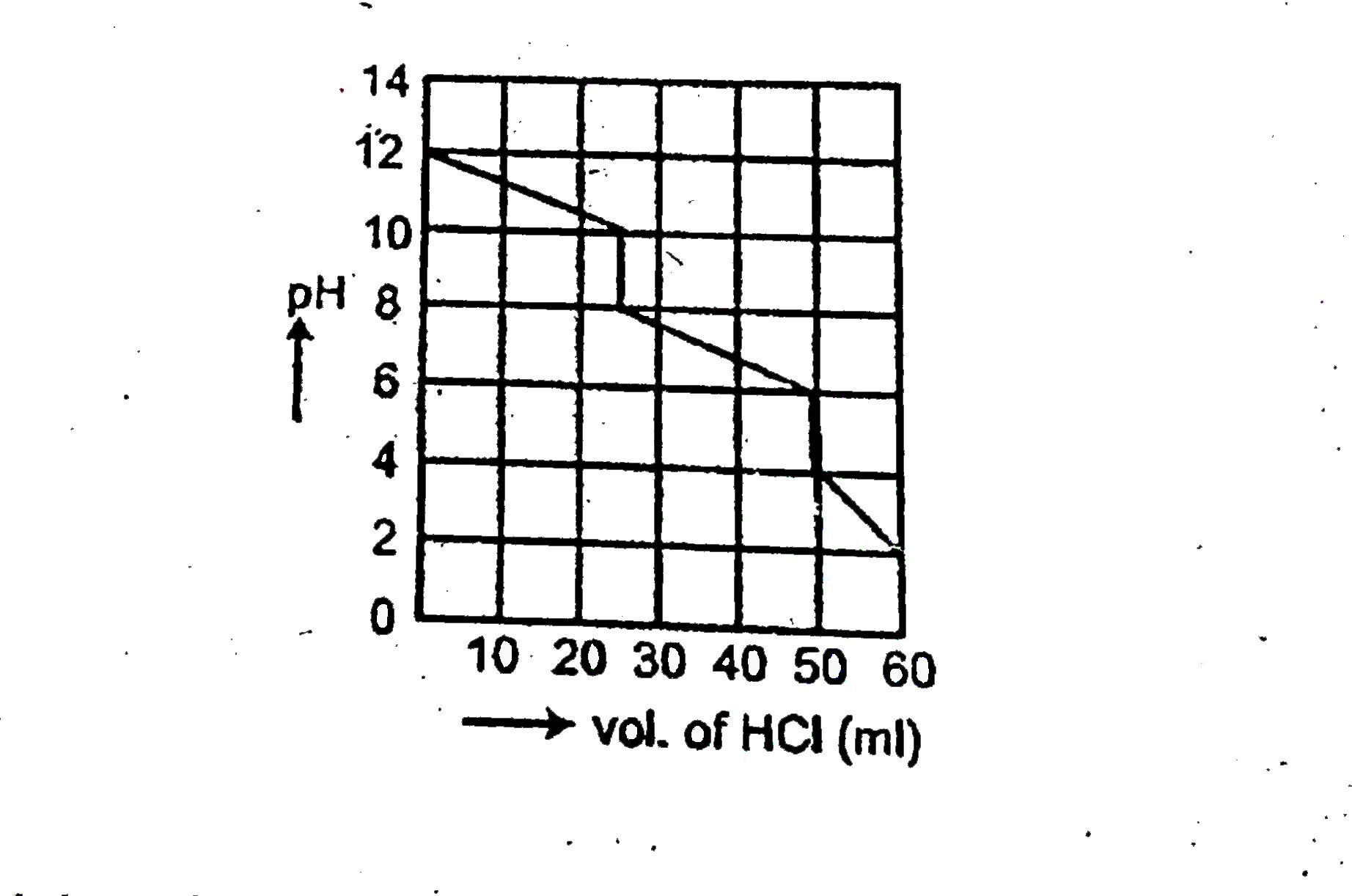Which acid -base indicator will give the best results for the titration of an aqueous ammonia solution with 0.10 M HCI ?
IndicatorColour ChangepH rangeMethyl violet red→blue0→2Methyl redred→yellow4→6Cresol redyellow→purple7→9Phenolphthaleincolourless−−−−−−−−−−−−−−→pink8→10
Methyl violet
Methyl red
Cresol red
Phenolphthalein
The correct Answer is:b
Step by step video, text & image solution for Which acid -base indicator will give the best results for the titration of an aqueous ammonia solution with 0.10 M HCI ? {:("Indicator","Colour Change","pH range"),("Methyl violet ", red to blue,0 to 2),("Methyl red", red to yellow, 4 to 6),("Cresol red", yellow to "purple", 7 to 9),("Phenolphthalein", "colourless" to "pink", 8 to 10):} by Chemistry experts to help you in doubts & scoring excellent marks in Class 12 exams.
Topper's Solved these Questions
Similar Questions
Select the best indicator from the given table for titration of 20 mL of 0.02 M CH3COOHwith0.02MNaOH.GivenpK_(a)(CH_(3)COOH)=4.74<br>{:(,"Indicator","pH range"),((I),"Bromothymol blue",6.0-7.6),((II),"Thymolphthalein",9.3-10.5),((III),"Malachite green",11.4-13),((IV),"M-Cresol purple",7.4-90):}
View SolutionA solution turns methyl orange into yellow. The approximate pH of solution is : \
View Solution
Knowledge Check
- Question 1 - Select One
For a series of indicators, the colour and pH range over which colour change takes place are as follows:
IndicatorColour change over pH rangeUYellow to blue pH 0.0 to 1.6VRed to yellow pH 2.8 to 4.1WRed to yellow pH 4.2 to 5.8XYellow to blue pH 6.0 to 7.7YColourless to red pH 8.2 to 10.0
Which of the followinfg statements is correct ?AIndicator V could be used to find the equivalence point for 0.01M acetic and 0.1M ammonium hydroxide (ammonia solution) titration.BIndicator Y could be used to distinguish between 0.1MHCI and 0.01MNaOH solutions in water.CIndicator X could be used to distinguish between solution of ammonium chloride and sodium acetate.DIndicator W could be suitable for use in determining the concentration of acetic acid in vinegar by base titration. - Question 2 - Select One
The variation of pH during the titration of 0.5 N Na2CO3 with 0.5 N HCl is shown in the given graph.The following table indicates the colour and pH ranges of different indicators :
IndicatorRange of colour changeColour in acidColour in baseThymol blue1.2to2.8RedYellowBromocresol red4.2to6.3RedYellowBromothymol blue6.0to7.6YellowBlueCresolphethalein8.2to9.8ColourlessRed

Based on the graph and the table which of the following statements are true ?AThe first equivalence point can be detected by cresolphthaleinBThe complete neutralisation can be detected by bromothymol blueCThe second equivalence point can be detected by bromocresol red.DThe volume of HCl required for the first equivalence point is half the volume of HCl required for the second equivalence point. - Question 3 - Select One or More
An acid-base indicator has Ka=3.0×10−5. The acid form of the indicator is red and the basic form is blue. Then:
ApH is 4.04 when indicator is 75% red.BpH is 5.00 when indicator is 75% blue.CpH is 5.00 when indicator is 75% red.DpH is 5.05 when indicator is 75% blue.
The acid from of an acid base indicator is yellow in acid and red in basic from. What is the change in pH in order to change the indicator form 80% yellow to 80% red.
View SolutionAn acid-base indicator has a Ka of 3.0×10−5. The acid form of the indicator is red and the basic form is blue. (a) By how much must the pH change in order to change the indicator from 75% red to 75% blue?
View SolutionTwo solutions A and B have pH values of 3.0 and 9.5 respectively. Which of these will turn litmus solution from blue to red and which will turn phenolphthalein from colourless to pink?
View SolutionThe acid from of an acid base indicator is yellow in acid and red in basic from. What is the change in pH in order to change the indicator form 80% yellow to 80% red.
View SolutionThe two indicators which give red or pink colour on adding a basic solution are :
A. China rose indicator
B. Turmeric paper indicator
C. Phenolphthalein indicator
D. Blue litmus indicatorView Solution

